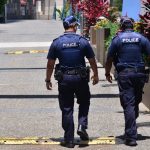NSW Court Rules that Identification Based Partly on a Media Report is Admissible

A riot broke out in the Fowler Compound of Villawood Detention Centre on April 20, 2011. What initially began as a rooftop protest against conditions in the centre by a handful of detainees, soon escalated into a chaotic disturbance involving about 100 asylum seekers.
Around 11 to 13 men climbed onto the roof of the Macquarie Building at the centre and started throwing tiles at Serco security officers, who were forced to flee the scene. An office building was set ablaze and $9 million worth of damages was caused.
An on-duty security officer, Mr Kiner, later identified Ali Haidari as one of the detainees on the roof removing titles and hurling them at the people below. Kiner said he’d recognised Haidari on the roof during the riot and then later identified him on ABC footage of the event.
NSW Supreme Court
Mr Haidari was convicted for an offence of riot under section 93B of the Crimes Act 1900 in a joint trial at the NSW Supreme Court. The Afghan asylum seeker was sentenced to 14 months imprisonment on June 28, 2013.
In handing down his sentence, Justice Robert Hulme said he had taken into account that Haidari and the three other offenders were suffering mental disorders caused by prolonged detention.
NSW Court of Criminal Appeal (NSWCCA)
In February 2015, Haidari appealed his conviction to the NSWCCA on three grounds. The first was that the admission of the evidence by officer Kiner in identifying him from the ABC footage was an error of law that amounted to a miscarriage of justice.
The second was that the trial judge erred when directing the jury on what constitutes a riot. This ground was later abandoned in light of a decision by the NSWCCA in another case. The third ground was that the verdict was unreasonable.
As no objection was raised to Kiner’s evidence during the original trial, the appeal required that leave be granted under Rule 4 of the Criminal Appeal Rules in order to rely upon this ground. The rule provides that:
‘No direction, omission to direct, or decision as to the admission or rejection of evidence, given by the Judge presiding at the trial, shall, without the leave of the Court, be allowed as a ground for appeal or an application for leave to appeal unless objection was taken at the trial to the direction, omission, or decision by the party appealing or applying for leave to appeal.’
It was therefore necessary for Haidari’s legal team to apply for leave to be granted.
Opinion evidence
Ms Francis, Haidari’s lawyer, argued that Kiner’s evidence was opinion evidence and should not have been admitted, as section 76 of the Evidence Act 1995 states:
‘Evidence of an opinion is not admissible to prove the existence of a fact about the existence of which the opinion was expressed.’
The lawyer submitted that excluding the evidence on that basis was consistent with the decision in the case of R v Drollett [2005] NSWCCA 356.
In that case, a convicted appeal was upheld after the trial judge had allowed Mr Stephens, a witness to a prison assault, to identify the alleged offender from CCTV footage of the incident, even though the footage did not represent what he had actually observed.
Mr Stephens had not seen the whole incident take place. He’d only seen a small portion of the event. It was found that his evidence was opinion and should be excluded, as he was making “an educated interpretation of what was depicted in the footage.”
Evidence is factual rather than opinion
Crown Prosecutor Mr Farmer pointed out that Haidari’s trial lawyer had only argued that Kiner had been mistaken in his evidence, not that he was unable to give evidence of that type.
Kiner had been working in the Fowler Compound for four years at the time, Farmer explained, and had actually referred to seeing Haidari directly, as well as identifying him in the footage. He argued that the evidence was indeed factual rather than opinion.
Farmer submitted that Haidari’s argument was erroneously based on assertions that Kiner was not in a position to witness the events depicted on the footage. The prosecutor pointed out that Kiner was an eyewitness to the events captured in the ABC footage, arguing that the fact the footage was taken from the other side of the building from where Kiner was standing did not alter his perception of what had taken place.
Leave refused
Justice Johnson differentiated Kiner’s evidence from that given in R v Drollett, as Mr Stephens in that case did not see any part of the event that allegedly constituted the offence. By contrast, Kiner testified that he had observed Haidari on the roof of the building throwing titles, as well as identified him from the footage.
The fact Kiner had not observed the events from the same angle as the camera did not mean his evidence was opinion, as he had witnessed the events himself.
The justice remarked that there’s a “blurred boundary that lies between fact and opinion” and acknowledged there is “no bright line test to be applied.”
However, he was satisfied that Kiner’s evidence was not opinion and refused to grant leave under section 4.
Outcome
The court noted there had been questions as to the reliability of Kiner’s evidence, as he had made a number of mistakes with respect to the names of some of the detainees. However, he had clearly identified Haidari both by name and identifying features.
And whilst giving his evidence, Kiner had used the terms “believe” and “belief”, but it was found he was using this language when “expressing an unqualified identification” of Haidari.
The court also reviewed the ABC footage and found that it was reliable and of “good quality.”
“Having made an independent assessment of the evidence”, the justice was satisfied with it. He concluded that “it was open to the jury to be satisfied beyond reasonable doubt that… [Haidari was] “guilty of the offence of which he was convicted.”
Haidari’s appeal against his conviction was therefore dismissed.
Receive all of our articles weekly
Authors

Paul Gregoire







